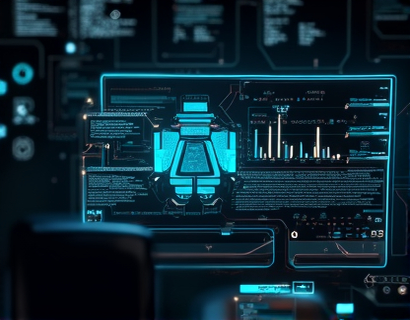Optimizing Healthcare Operations with Cutting-Edge Software Solutions
In the rapidly evolving landscape of healthcare, medical professionals and organizations are constantly seeking ways to enhance their operational efficiency while maintaining the highest standards of patient care. The integration of advanced software solutions has emerged as a pivotal strategy in achieving these goals. By leveraging innovative technology, healthcare providers can streamline administrative tasks, improve patient outcomes, and ultimately elevate the quality of services they offer. This article delves into the transformative impact of cutting-edge software solutions on healthcare operations, highlighting how these tools can redefine the way medical practices function.
Streamlining Administrative Tasks
The administrative burden in healthcare is substantial, often diverting valuable time and resources away from patient care. Software solutions designed for healthcare management can significantly alleviate this burden. Electronic Health Records (EHR) systems, for instance, centralize patient information, making it easily accessible and up-to-date. This not only reduces the risk of errors but also enhances the efficiency of data management. Automated scheduling tools eliminate the need for manual booking, reducing no-shows and optimizing appointment availability. Billing and insurance reconciliation software automates the complex process of claims submission and payment tracking, ensuring accuracy and compliance with regulatory standards.
Moreover, practice management software integrates various aspects of healthcare operations into a single platform. This integration facilitates seamless workflows, reduces manual data entry, and minimizes the potential for human error. By consolidating tasks such as patient intake, appointment management, and documentation, healthcare providers can focus more on delivering high-quality care. The time saved through automation translates directly into improved patient satisfaction and better clinical outcomes.
Enhancing Patient Care
Patient care is at the heart of healthcare, and software solutions play a crucial role in enhancing the patient experience. Telehealth platforms enable remote consultations, making healthcare more accessible, especially for patients in remote or underserved areas. These platforms support video and audio communications, allowing patients to receive medical advice and follow-up care from the comfort of their homes. This not only improves convenience but also reduces the risk of infection transmission.
Patient engagement platforms are another vital tool in modern healthcare. These platforms provide patients with secure access to their health records, test results, and treatment plans. By empowering patients to take an active role in their care, these tools foster better health literacy and adherence to treatment regimens. Additionally, patient feedback systems collect valuable insights that can be used to continuously improve service quality and patient satisfaction.
Personalized care is also becoming increasingly feasible through the use of data analytics and machine learning. By analyzing large datasets, healthcare providers can identify patterns and trends that inform personalized treatment plans. Predictive analytics can help in early detection of potential health issues, enabling proactive interventions. This level of customization not only enhances patient outcomes but also builds trust and loyalty in the healthcare provider-patient relationship.
Boosting Operational Efficiency
Operational efficiency is crucial for the sustainability and growth of healthcare organizations. Advanced software solutions offer powerful tools to optimize resource allocation, streamline workflows, and reduce costs. Inventory management software ensures that medical supplies and pharmaceuticals are stocked appropriately, minimizing waste and ensuring availability when needed. This is particularly important in managing perishable items such as vaccines and blood products.
Workflow optimization software identifies bottlenecks and inefficiencies in daily operations, providing actionable insights to improve processes. For example, by analyzing the flow of patients through a clinic, healthcare providers can adjust staffing levels and scheduling to reduce wait times and improve throughput. This not only enhances patient satisfaction but also increases the overall productivity of the practice.
Cloud-based solutions offer scalable and flexible infrastructure, allowing healthcare providers to adapt quickly to changing demands. Cloud storage for medical images and records ensures that data is secure and accessible from anywhere, facilitating collaboration among healthcare teams. This is especially beneficial in multidisciplinary settings where timely access to comprehensive patient information is critical.
Improving Compliance and Security
Compliance with regulatory standards is a significant concern in healthcare, and software solutions can help ensure adherence to laws such as the Health Insurance Portability and Accountability Act (HIPAA). Security features in healthcare software, including encryption, access controls, and audit trails, protect sensitive patient data from unauthorized access and breaches. Regular updates and patches ensure that systems remain compliant with evolving regulations and security standards.
Audit trails provide a detailed record of all system activities, which is essential for compliance audits and internal reviews. This level of transparency and accountability not only helps in meeting regulatory requirements but also builds trust with patients and stakeholders. By automating compliance processes, healthcare providers can allocate more resources to clinical activities, further enhancing their operational efficiency.
Case Studies and Real-World Applications
Several healthcare organizations have successfully implemented advanced software solutions to transform their operations. For example, a large hospital system in the United States adopted a comprehensive EHR system, resulting in a 30% reduction in administrative costs and a significant improvement in patient satisfaction scores. The centralized patient data allowed for more coordinated care, reducing medical errors and improving patient outcomes.
Another instance is a network of primary care clinics that implemented a telehealth platform. This initiative led to a 40% increase in patient engagement and a 25% reduction in no-show rates. The convenience of remote consultations also helped in managing patient loads more effectively, leading to shorter wait times and higher overall satisfaction.
A smaller practice in a rural area utilized a practice management software that integrated scheduling, billing, and patient communication. The practice reported a 50% decrease in administrative staff hours dedicated to these tasks, allowing the remaining staff to focus more on patient care. The streamlined processes also resulted in a 20% increase in revenue due to improved efficiency and reduced errors.
Future Trends and Innovations
The healthcare technology landscape is continuously evolving, with new innovations on the horizon. Artificial Intelligence (AI) and Machine Learning (ML) are poised to revolutionize healthcare operations further. AI-driven diagnostic tools can analyze medical images and patient data to assist in early detection and diagnosis of diseases. ML algorithms can predict patient outcomes and optimize treatment plans based on vast amounts of historical data.
Blockchain technology offers promising solutions for secure and transparent data sharing among healthcare providers. By creating an immutable and decentralized ledger, blockchain can enhance data integrity and interoperability, facilitating seamless information exchange across different systems and organizations.
The Internet of Medical Things (IoMT) is another area of rapid growth, with connected devices monitoring patient health in real-time and sending data directly to healthcare providers. This continuous monitoring can lead to more timely interventions and better management of chronic conditions.
Conclusion
The integration of cutting-edge software solutions in healthcare operations is not just a trend but a necessity for modern medical practices. By streamlining administrative tasks, enhancing patient care, and boosting operational efficiency, these tools enable healthcare professionals to focus on what they do best—delivering exceptional medical services. As technology continues to advance, the potential for further improvements in healthcare delivery is immense. Embracing these innovations is essential for healthcare organizations aiming to stay competitive and provide the highest quality of care to their patients.











































